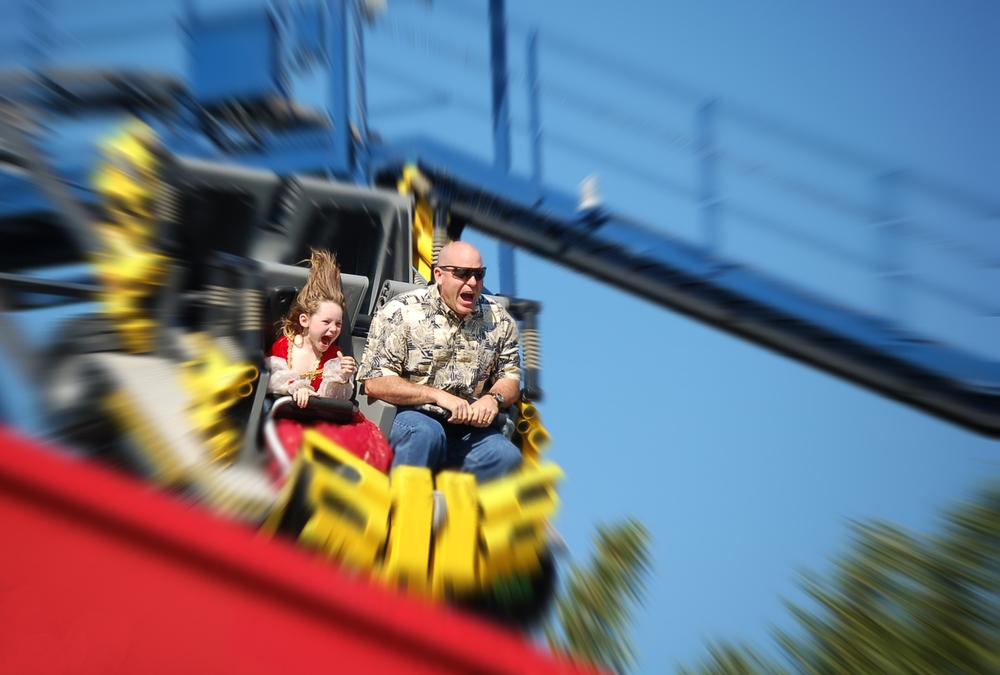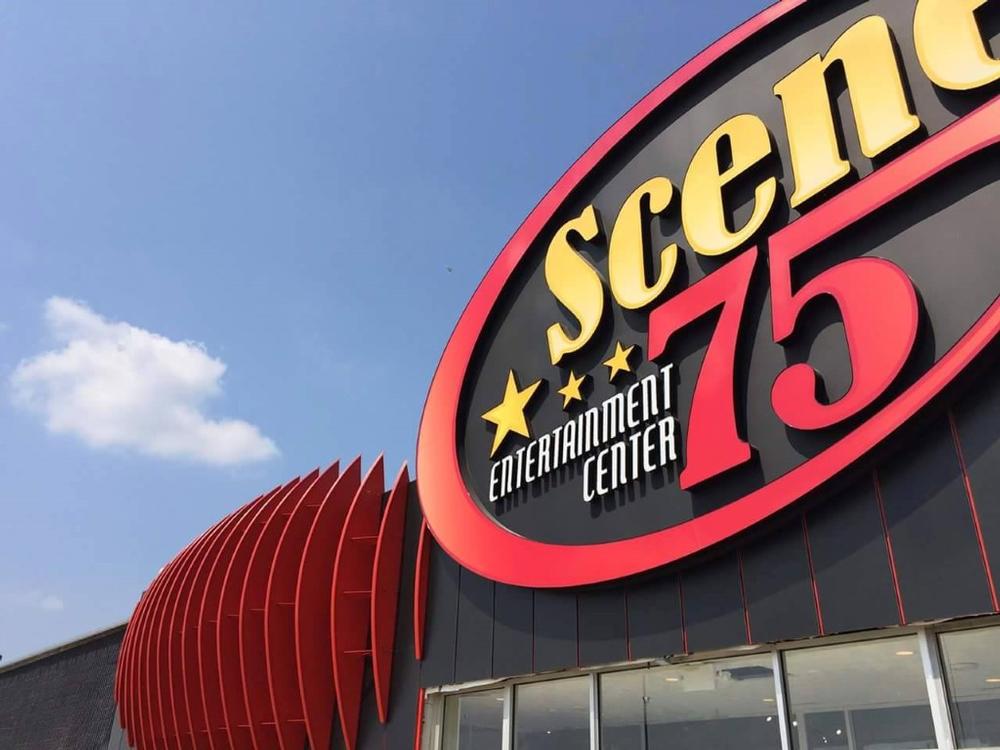Ready for roller coasters, water rides, and family-friendly thrills in the Buckeye State? These amusement parks in Ohio serve up high-speed fun, classic carnival vibes, and splashy adventures for all ages.
Highlights:
Unique Amusement Parks in Ohio
1. Adventure Zone

A fairly small family park spread over six acres near beautiful Geneva-on-the-Lake, Adventure Zone has something for everyone: a zipline and two climbing wall for adventure seekers, Super Squirter bumper boats and go carts for kids big and small, mini golf for the whole family, great amusement arcade, a merry-go-round, and a special soft crawl place for the tiny kids. There is also a nice snack bar, so everything is set for a fantastic birthday celebration for some lucky kid. Adventure Zone is open daily during the summer and on weekends in May and September. It is closed during winter.
5600 Lake Rd E, Geneva, OH 44041, Phone: 440-466-3555
2. Cedar Point

Opened in 1870, Cedar Point is one of the oldest amusement parks in the States. This massive park is spread over 364 acres on an island in Lake Erie near Sandusky, Ohio. The park is part of a resort with a mile long beach, a hotel, and a restaurant. There are 72 world-record rides, 17 of them roller coasters, including the famous Steel Vengeance, and six roller coasters over 200 feet tall. The views of the lake from the roller coasters is breathtaking and a big part of the park’s attraction. Next to Cedar Point is an outdoor water park Cedar Point Shores, two marinas, an indoor water park Castaway Bay, an outdoor sports complex Cedar Point Sports Center, and a few nearby luxury resorts.
1 Cedar Point Dr, Sandusky, OH 44870, Phone: 419-627-2350
3. Kings Island

Located in Mason, Kings Island is the largest amusement and waterpark in the Midwest. It offers over 100 rides, shows, and attractions on dry land and more than 50 rides on the 33-acre Soak City Waterpark – there is an adventure for everyone. This is true heaven for thrill-seekers, with rides like Drop Tower, which plunges 26 stories from a height of 315 feet at 67 miles per hour. Delirium spirals its guests in a 240-degree arc and throws them up to 137 feet in the air. In WindSeeker, passengers climb 30 stories above the park on a tower swing. Xtreme Skyflyer offers the opportunity to experience hang gliding and skydiving at the same time. Planet Snoopy is a fun kids’ area, while Dinosaurs Alive takes you 245 million years back in time.
6300 Kings Island Dr, Mason, OH 45040-9665, Phone: 513-754-5700
Amusement Parks in Ohio for Younger Kids
4. Stricker's Grove

Located in Hamilton, Stricker's Grove is a 90-year-old private amusement park open to the public only a few days a year. But, once it is open, it is pretty special. Toddlers can take an unlimited number of rides on The Whip while you are relaxing and tasting roasted corn harvested the same morning. You can ride the Tornado Coaster, one of very few wooden roller coasters left in Hamilton County. The other one is also in Sticker’s Grove – the classic wooden roller coaster Teddy Bear. Other attractions include Boat Ride, Rockets, Little Cars, Kiddie Whip, Kiddie Turtles, Ferris wheel, Tilt-A-Whirl, Scrambler, Flying Scooters, Electric Rainbow, Mini Golf, and more. The park can be rented for birthdays, weddings, and other private celebrations.
11490 Hamilton Cleves Rd, Hamilton, OH 45013, Phone: 513-521-9747
5. Tuscora Park

Tuscora Park is a popular family amusement park in New Philadelphia that offers a range of vintage rides and a nice picnic area with playgrounds. There is a popular classic Ferris Wheel, a fun mini golf, a carousel with wooden horses, tiny planes, swings, dune buggies, and all sorts of sports. You’ll find bocce courts, tennis courts, basketball courts, a community walking track, a baseball field, three swimming pools, and lot of places to eat – everything needed for a fun family day outside. The pools are open from Memorial Day to Labor Day and are monitored by a lifeguard. One of the pools is a small, fenced pool for the kids. The park is managed by a not-for-profit organization, and the prices are kept to the minimum to be affordable to everyone.
161 Tuscora Ave NW, New Philadelphia, OH 44663-1800, Phone: 330-343-4644
6. Funtimes Fun Park in Alliance

The Funtimes Fun Park in Alliance is a privately-owned amusement park that promises tons of great outdoor family fun for visitors of all ages. Make fun memories with your children, relatives, or friends through incredible attractions like the Slow-Fast Pitch Softball Batting Cages, enjoyable and challenging Miniature Golf courses, and Go-Karts. Meanwhile, there are also great amusement park rides to enjoy like the Series Serpent Family Roller Coaster, the Musik Express, Tilt-A-Whirl, and Gunky Monkey’s Barrels of Fun. Additionally, there are great kids' rides to enjoy and regular events like free outdoor movie screenings of popular family movies every weekend. Guests can even snag an optional snack pack that delivers bang for your buck.
12175 Street NE, Alliance, Ohio 44601; Phone: 330-823-3933
7. Fast Eddie's Sport's Park

Promising loads of fun for all its visitors, Fast Eddie's Sport's Park in Port Clinton is a great option for families that want to add amusement parks to their vacation itinerary. The park opened in 2001 and has been welcoming visitors to its convenient location consistently since then. Visitors can enjoy outdoor sporting activities like Go-Karts, mini golf, and even bumper boat rides. For guests who prefer to have fun indoors, Island Adventures also features a great arcade with tons of games to be played and prizes to be won. Whether you’re visiting with young kids or older ones, it’s bound to be a great time.
280 SE Catawba Road, Port Clinton, Ohio 43452; Phone: 419-732-2020
8. The Columbus Zoo and Aquarium

Prepare to be amazed when you visit The Columbus Zoo and Aquarium. This incredible animal sanctuary is a top attraction in Ohio that is home to over 10,000 animals. Visitors can meet these animals face to face through the zoo and aquarium’s six unique regional exhibits and many more recreational experiences. Meet the wildlife of North America, visit those from the Heart of Africa, take a trip through Asia Quest, or head in for a Congo Expedition. Guests can also meet the animals native to Australia and the Islands or get to know those who call Shores home. There are several special animal experiences that guests can book, like camel rides, in addition to tours and animal presentations. Meanwhile, guests should definitely take the time to enjoy the rides at the park like the Dinosaur Island Boat Ride, Flying Clipper, Sea Dragon Coaster, and many more.
4850 Powell Road, Powell, Ohio 43065; Phone: 614-645-3400
9. Scene75

There aren’t many places in the world that can call themselves the top indoor family entertainment center in the entire world and yet at Scene75, they can. Having been awarded the distinction in both 2016 and 2021 by the International Association of Amusement Parks and Attractions, Scene75 promises unparalleled fun through a mindboggling number of games and attractions. Great for visitors of all ages, Scene75 has something for everyone's personality to enjoy such as Indoor Go-karts, Blacklight Mini-Golf, and Virtual Reality experiences. There’s even an inflatable Toddler Town for your kiddos to enjoy, awesome mini-bowling, and a 4D Motion Theater. With several locations in Ohio and neighboring states, guests are never too far from a ton of fun.
3688 Center Road, Brunswick, Ohio 44212; Phone: 234-803-1100
Plan Your Trip


